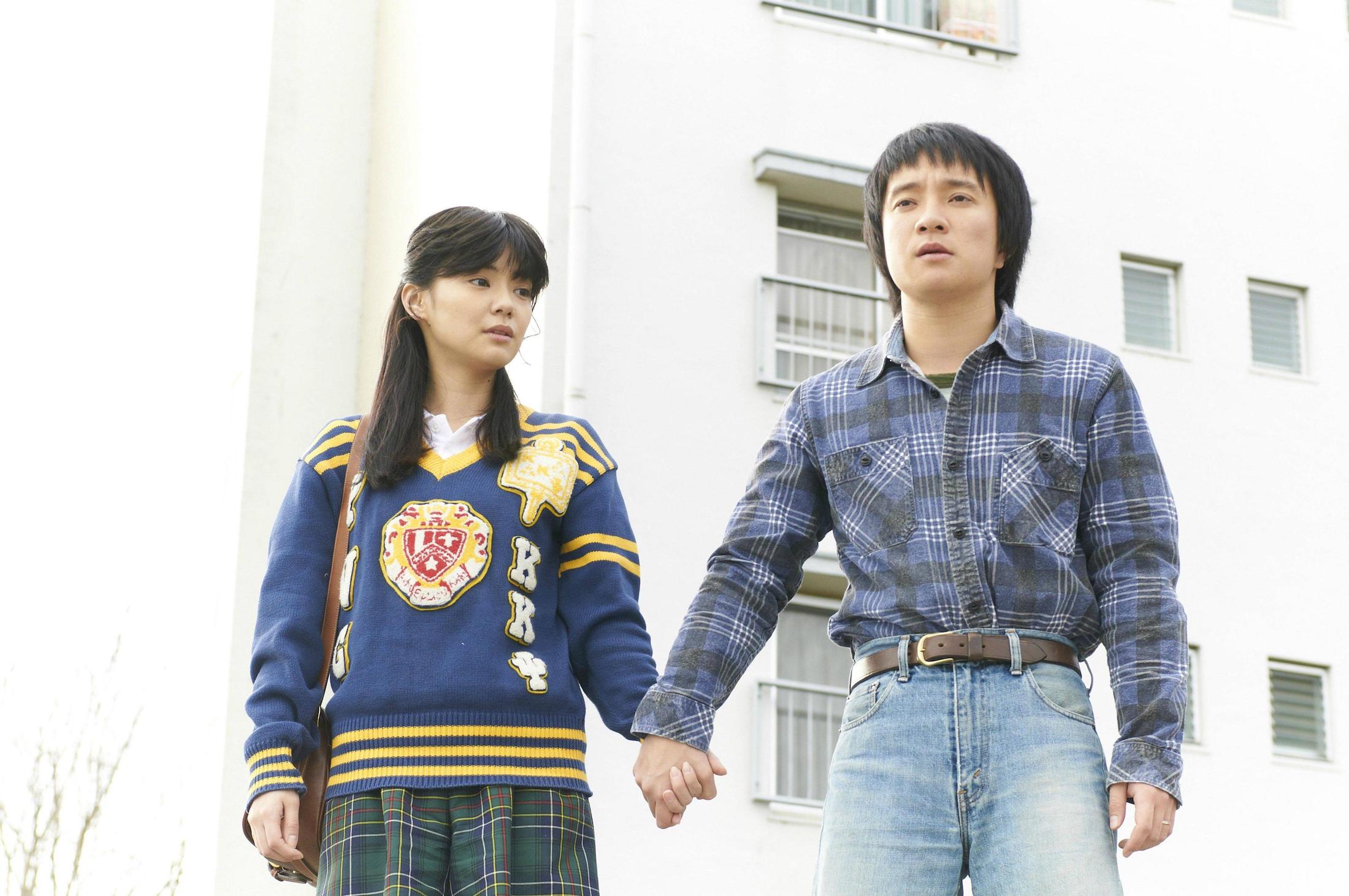By Chlotrudis Independent Film Society
Rating: 5 cats
Director: Yoshihiro Nakamura
Starring: Gaku Hamada | Haru | Kana Kurashina | Kei Tanaka | Kento Nagayama | Naomi Ortega | Nene Otsuko

Original language title: Minasan, sayonara
Country: japan
Year: 2013
Running time: 120
IMDB: http://www.imdb.com/title/tt2299471/combined
Jason says: “I feel vaguely like we’ve been taking Yoshihiro Nakamura for granted. Though he got his start writing horror movies for the likes of Hideo Nakata, he’s spent the last few years on a string of off-beat but surprisingly affecting movies that people have raved about at festivals – FISH STORY, GOLDEN SLUMBER, A BOY AND HIS SAMURAI, and POTECHI- but which just don’t seem to get the attention (or legal release) that they deserve in North America. Even the description of this movie in the festival program focused more on frequent star Gaku Hamada. And yet, here Nakamura is again, taking another seemingly absurd premise and delivering something downright surprising.
“In 1981, at the age of twelve, Satoru Watari (Gaku Hamada) refused to continue on to junior high – or, indeed, even leave the housing project where he’d spent all his life. It was, after all, designed to be self-contained, with shops and play areas and the elementary school. He set himself a schedule that includes regular patrols of the building and a plan to begin work at the cake shop on the ground floor when he turned sixteen. As the years go on, his 106 classmates start to move away and foreign workers displace hopeful families, but he stubbornly stays put even as things change around him.
“Ah, but ‘stubborn’ doesn’t tell the whole story. Nakamura and co-writer Tamio Hayashi (adapting Takehiko Kubodera’s novel Minasang, Sayanora) have something in their back pockets that makes this more than a fairy tale about an eccentric young man who is in line for a simple moral lesson, and they spring it on the audience seemingly out of nowhere just when the movie seems to have settled into a rhythm. It’s a move that suddenly connects a great many pieces of what has come before, but also does not overly upset the tenor of the picture. This is a picture that reveals, rather than changes, and to excellent effect.
“It doesn’t reveal everything, though, and a great deal of its strength comes from how the audience doesn’t get a complete picture of many supporting characters. Make no mistake, the cast – Nene Otsuka as Satoru’s mother, Haru as the girl next door, Kana Kurashina as the surprisingly attainable beauty, Kento Nagayama as the best friend, and more – are playing fully-realized characters, but as time skips forward, they change, vanish, and grow beyond what Satoru can truly understand. The ones whose stories are fairly self-contained – Naomi Ortega as a Brazilian teenager Satoru befriends and Kei Tanaka as her stepfather – show up fairly late, when maybe Satoru is starting to figure some things out.
“Hamada, meanwhile, gives an excellent performance as Satoru. It doesn’t look like he or any of the other cast members are switched out for actual kids in the early going (although there does sometimes seem to be some weird digital manipulation going on with heads too large for bodies), which actually turns out to be a surprise; age twelve to around thirty is a heck of a spread, and he never seems off. He nails an appropriate tone of arrested development while also not making the adult Satoru particularly childish, and he both captures what makes the character frustrating and in a strange way, noble.
“Nakamura has a few tricks up his sleeve – the movie starts with an ironic promo reel that looks like it’s in 16mm and promoting the complex as it opens in the late 1960s or early 1970s, and every jump forward in time is accompanied by a graphic on how many of his classmate have left – but for the most part he just tells the story cleanly, letting lack of information sometimes tell the story as well as exposition and giving dramatic moments the exclamation points the need. There’s sly humor and unspoken sadness, and things that are often romanticized in other movies (say, teenagers exploring sex) that are believably uncomfortable here.
“SEE YOU TOMORROW, EVERYONE came out in Japan this January, and Yoshihiro Nakamura has already had another film released there since, with his next one on the way. I wonder if being so prolific has actually hurt him internationally, as it’s been all but impossible to see everything – but what we have seen has been a phenomenal run. This is another great one from what seems like an under-heralded part of today’s Japanese cinema. 5 cats
“Seen 28 July 2013 in Salle de Sève (Fantasia Festival, HD)”
